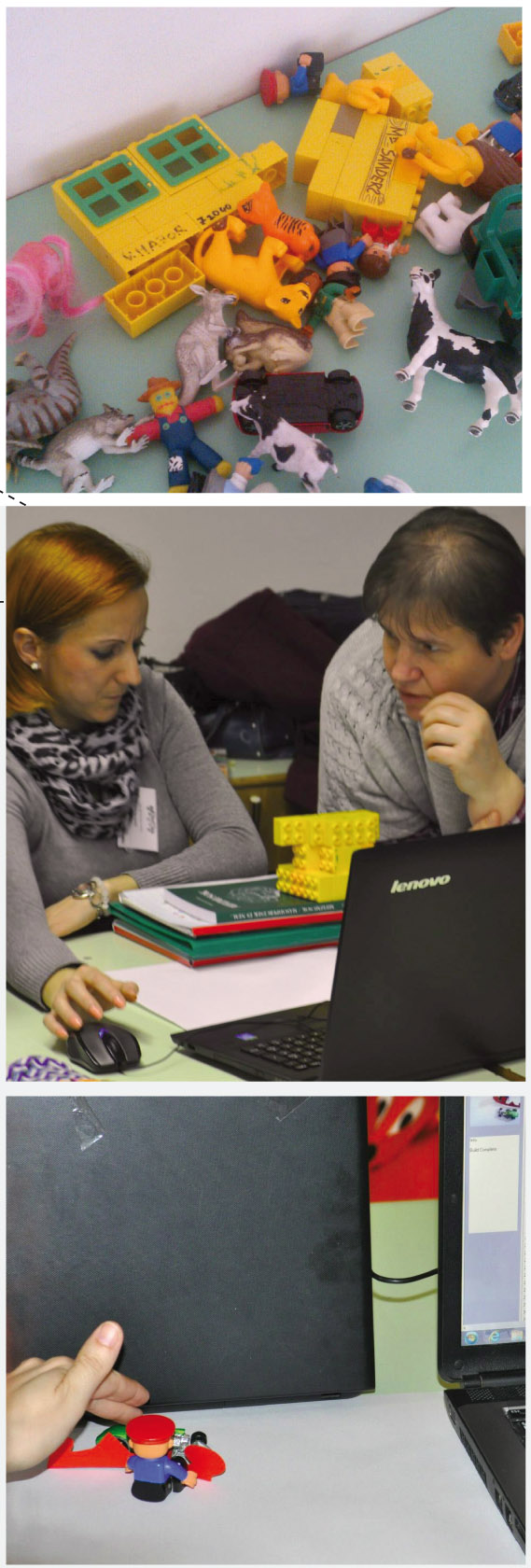
With this method, students process various parts of the curriculum through animation making processes, that is, they create a short movie to present certain curricular topics. Its greatest strength is that students use more of their senses during the learning process, and therefore find it more exciting than traditional methods.
Teachers are facing quite a challenge trying to raise the attention of the digital generation and motivate them to learn. In an ICT-controlled society, learning habits are transforming: visual information has become dominant over written information, and video has gain importance; young people are characterised by multitasking and a pursuit of instant knowledge. The line between entertainment and learning has become blurry, active trying and learning, as well as being constantly online and therefore belonging to a community, are becoming increasingly important.
According to AnimClass, making animations in the classroom has proven extremely effective both in increasing motivation to learn and developing basic and transversal competences.
 With this method, students process various parts of the curriculum through animation making processes, that is, they create a short movie to present certain curricular topics or even to a chapter in a textbook. Work is generally conducted in groups, developing students' cooperative skills. The method can be used with almost any subject, and it also allows processing several subjects together. Its greatest strength is that students use more of their senses during the learning process, and therefore find it more exciting than traditional methods. In order to make an animation, they need to carefully study and understand the subject matter, and very often they look up details which otherwise they wouldn't read. At the end of the creative process, they get an instant, “palpable”, or rather visible, result, which they can (and do) share, as well, because they're proud of their work.
With this method, students process various parts of the curriculum through animation making processes, that is, they create a short movie to present certain curricular topics or even to a chapter in a textbook. Work is generally conducted in groups, developing students' cooperative skills. The method can be used with almost any subject, and it also allows processing several subjects together. Its greatest strength is that students use more of their senses during the learning process, and therefore find it more exciting than traditional methods. In order to make an animation, they need to carefully study and understand the subject matter, and very often they look up details which otherwise they wouldn't read. At the end of the creative process, they get an instant, “palpable”, or rather visible, result, which they can (and do) share, as well, because they're proud of their work.
With this method, students process various parts of the curriculum through animation making processes, that is, they create a short movie to present certain curricular topics or even to a chapter in a textbook. Work is generally conducted in groups, developing students' cooperative skills. The method can be used with almost any subject, and it also allows processing several subjects together. Its greatest strength is that students use more of their senses during the learning process, and therefore find it more exciting than traditional methods. In order to make an animation, they need to carefully study and understand the subject matter, and very often they look up details which otherwise they wouldn't read. At the end of the creative process, they get an instant, “palpable”, or rather visible, result, which they can (and do) share, as well, because they're proud of their work.
Once you enter the magical world of animation, it’s hard to leave…
The Centre for Educational Science at Corvinus University (BCE) of Budapest launched a two-year innovation transfer project called Animated Classwork (AnimClass), to experiment with using animation making as an educational tool. Within the project, Hungarian VET schools experimented with animation making for educational purposes, with support from Danish and Estonian colleagues, already experienced in the field, and in cooperation with professionals from the BCE Centre for Educational Science and Kecskemétfilm.
The experimental project involved the teachers and students of Handler Nándor Vocational School and Hansági Ferenc Vocational and Secondary School for Catering and Tourism of Szeged; however, the method that was presented at conferences and other forums spread quickly, and teachers and students in a number of other schools took up making animations in the classroom, too. The student groups addressed various subject matters, but there were also some who only made animations for fun. It has its own benefits, too, since making animations is useful and character-building even when it’s not aimed at processing specific learning materials.
| A collection of animations created as part of the project is available at http://www.animclass.org. The website also contains actual examples to facilitate usage in the classroom, as well as practical advice from teachers involved in the experiment. |
The Centre for Educational Science of BCE plans to launch a 30-hour accredited training programme for teachers, developed as part of the project, in the near future. Those involved in the training will learn how to act as a facilitator, required for using animation making as a teaching method in the classroom, that is, to support learning. At the training, teachers can learn about various techniques and methods to make animations, as well as the ICT tools and software required for making animations. Besides, they can also develop their social and conflict management skills.
Photos: ELTE PPK, animclass.org
Last modified: 16-10-2017















